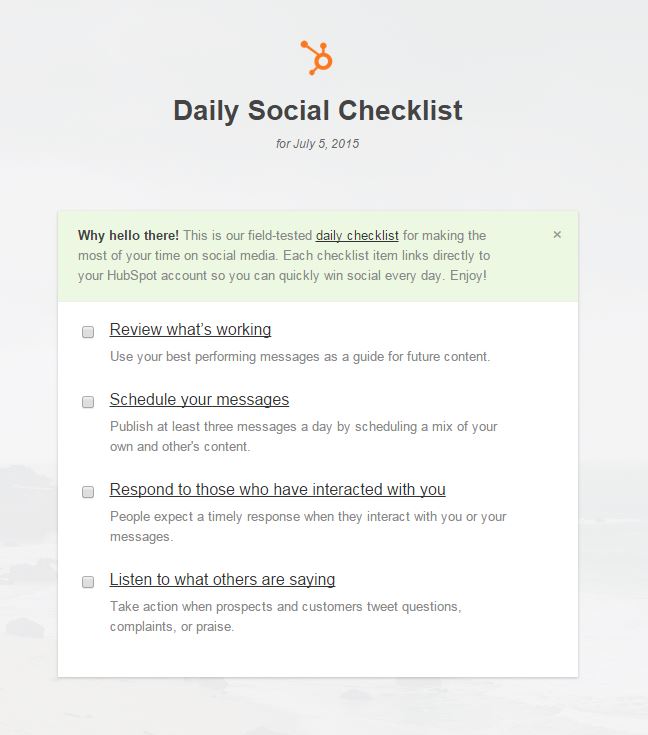 So you've picked a social network or two to focus on for your business. (See How To Pick Which Social Network To Focus On For Business?) How do you know if your networking efforts are working? Let's explore.
So you've picked a social network or two to focus on for your business. (See How To Pick Which Social Network To Focus On For Business?) How do you know if your networking efforts are working? Let's explore.
The First Stage of Social Networking for Your Business
Well, you'll need to be patient. When you first launch your social profiles, you need to focus on building them (same goes for launching a blog (see What Results To Expect When Starting a Blog). Here are the steps you'll need to focus on:
Step 1: grow your social network
Once you set up your social profile, you need to focus on following and getting followers. Make sure to focus on quality rather than quantity. Yes, you are trying to reach a critical mass relatively quickly. However, you don't ever want to lose sight of your business purpose for becoming immersed socially. Think about your business personas (see The Case for Personas in Business: Connecting With Customers) and your business goals to stay focused.
You will be pressured by the different networks to add followers. Otherwise, nothing will appear in your homefeed and things will look quite - well - boring. However, have standards. I like to check profiles before following, friending, liking or linking with someone. If they look spammy, I don't reciprocate.
As you add people to your network, you will generate followers as many will reciprocate and follow you back. The better the quality of the people you decide to follow, the greater their relevance to what matters to you, your business and your customer personas, the better the quality of the content you will come across and the greater the opportunity you will have to create a social networking community of value. In other words, you'll learn from your community and your community will appreciate your participation.
Step 2: engage with your social network
That means responding, acknowledging, following back, respectfully amplifying as appropriate. If you keep in mind that a social network is the digital equivalent of hanging out with parents at the Middle School softball game or attending a Chamber of Commerce event, then you'll get the hang of it. Each network has its own personality or culture (see Business Innovation Inspired By Extreme Foreignness) and it's important to be mindful of that as you engage with your network.
>> See 11 Reasons for Using Hashtags on Twitter
>> See Planning a Customer Event? Add Social Media and Make It Social!
Step 3: regularly publish content
This is critical. This can also bring you to your knees if you don't plan (i.e., terms such as 'feeding the content beast' come to mind). You need to publish regularly and consistently. Having a content strategy and a content calendar will save you. As will trying to involve others in your organization to support and amplify the content you publish on behalf of your business.
Don't forget to include visuals in the content you publish. Whether it's infographics for Pinterest, videos for YouTube or Facebook, and images for Twitter, Instagram, Google+ and Facebook, visuals matter and thinking of them after the fact can be a bummer. Plan ahead and make the most of every opportunity for content that you can repurpose socially formally and informally. (BTW - behind the scenes type images and perspectives are invaluable and go far in building interest for and trust in your business.)
Make sure to include in your content calendar regular repurposing of existing evergreen blog articles and relevant web pages, as well as invitations for your followers and fan to subscribe to your content or download premium content.
Step 3a: depending on the social network, consider advertising
This is most relevant if Facebook is the business social network of choice for you. You will definitely want to consider Facebook ads to grow your fan base, to boost your updates and even to promote your site (see How Do You Use Facebook Ads to Connect With Customers?).
However, Pinterest offers promoted pins and Twitter has promoted posts. Depending on which network is most effective for your business, you may want to explore the advertising options each makes available.
Step 4: measure, review, analyze your social networking efforts
Most social networks offer you stats to measure, review and analyze your social networking efforts. What I often find, though, is that the data offers too limited a snapshot. You see, it only provides you with perspective on what happens within the network, not necessarily what happens for your business as a result of your network activity.
In fact, you may discover that what generated the most activity on the network had little to do with what actually drove people to your website or even in generating new social fans and followers.
It's important to keep in mind what your goal is for embracing social networking. Is it customer service, lead generation, thought leadership, ecommerce? Based on your goal, you'll be able to determine whether your activities lead to relevant actions for your business.
You will need tools - other than the social networks - to help you analyze your results. Google Analytics is free and intensely effective for helping you measure results. Another - which I use is HubSpot.
>> See How Website Analytics Can Inspire Your Inbound Marketing
>> See Setting Up Goals in Google Analytics: Digital Marketing Must-Have
What you are looking for is whether your social interactions generate social referrals and conversions on your website. And, if they do, what is the quality of that traffic? Does it have a low bounce rate? Does it lead to traffic that spends a great deal of time exploring many pages on your site?
(In a case study that Arpi Nalbandian and I explored during Coverings 2015, we highlighted the differences between traffic from Houzz - where home renovation focused and ready-to-buy visitors had a ~14% bounce rate vs. visitors from Pinterest who were in exploratory-mode and exhibited a 50% bounce rate.)
For Ongoing Social Networking Encouragement & Reminding
In case I didn't make the point earlier, it's very important to have a daily social regimen. If you need reminding, download HubSpot's Social Inbox Daily Checklist Chrome Extension. It will gently encourage you to:
1. Review what's working socially.
2. Schedule your social updates.
3. Respond to your social posse.
4. Monitor the conversations so you can become further involved.
And, when you're all done, you get a gorgeous image. Encouragement, reward and support for good social networking habits. :)

What to Look For When Evaluating What's Working Socially
Generally, social media activity does not directly lead to sales. Going back to the real life equivalent, it's unlikely that you'll generate much business as a result of participating in one chamber event. However, that one event may create an opportunity to start a relationship which may eventually turn into business.
When you are committing to social networking for your business, you're looking for the following:
1. Are you publishing regularly and consistently?
If you are committed to being consistent and regular, you should be publishing consistently over time. For more activity, you'll need to be ready for a burst of additional interaction.
2. Are your followers doing anything as a result of what you publish?
If they aren't, you may need to make more effort interacting with them and amplifying what they are publishing. Pay attention to what generates interest and what doesn't.
3. Does your social activity generate new fans and followers?
If not, you need to figure out why. Are you following the wrong people?
4. Does that interaction generate traffic back to your site?
This matters because you don't own what happens on social networks. Ultimately, you want people to go to your home base or hub so they can learn about what you do, become educated and start to trust you.
5. Does that traffic back to your site convert?
These conversions can be phone calls, contact us requests, demos, ebook downloads, or even subscriptions to your newsletter. You're looking to determine if any of the socially referred traffic winds up interacting with you more intensely, by identifying him/herself so you can further develop the relationship and nurture it into one that is qualified to become a customer.
If you don't notice any of this happening, you will want to evaluate your networking efforts and consider how you might modify them so they do (eventually) deliver interested and qualified traffic to your business.
What have you noticed in your social interactions? How have they integrated into and delivered more qualified traffic for your business?








